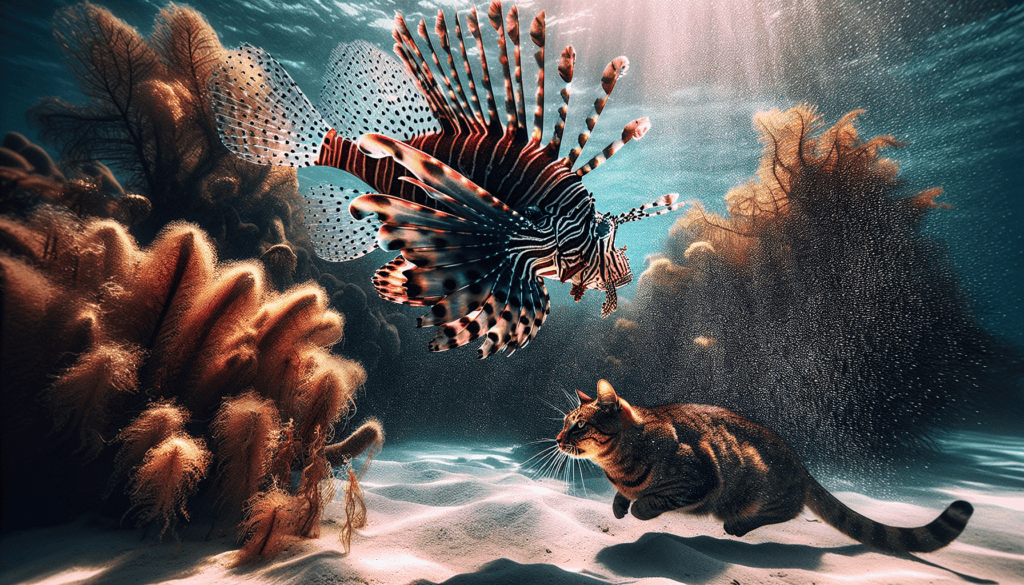Comparing the Ecological Roles of Lionfish and Catfish in Aquatic Ecosystems
I. Introduction
Lionfish and catfish, two distinct groups of aquatic predators, play significant roles in their respective ecosystems. While lionfish are known for their striking appearance and invasive nature in coral reefs, catfish are often recognized as bottom-dwelling scavengers in freshwater habitats. This article explores the ecological roles of these two fish species, examining their impact on aquatic environments and the challenges they present to ecosystem management.
II. Lionfish: The Invasive Marauder
Lionfish, native to the Indo-Pacific region, have become a major concern in Atlantic waters due to their invasive nature. These visually stunning fish, with their distinctive stripes and venomous spines, have rapidly colonized coral reefs across the Caribbean and Western Atlantic. Their presence has led to significant disruptions in local ecosystems, as they voraciously consume native fish species and compete for resources.
III. Catfish: The Bottom-Dwelling Scavenger
Catfish, found in freshwater ecosystems worldwide, play a crucial role as bottom-dwelling scavengers. These fish are known for their barbels, which help them locate food in murky waters. Catfish contribute to ecosystem health by consuming detritus, algae, and small organisms, effectively serving as nature’s cleanup crew in rivers, lakes, and streams.
IV. Feeding Habits and Prey Selection
Lionfish are opportunistic predators with a diverse diet, consuming a wide range of small fish and invertebrates. Their feeding habits can significantly impact local fish populations. In contrast, catfish exhibit a more varied feeding strategy, ranging from detritivores to predators depending on the species. Many catfish species are opportunistic feeders, adapting their diet based on available food sources in their environment.
V. Impact on Native Species
The impact of lionfish on native species has been well-documented, with studies showing significant reductions in the abundance of small reef fish in invaded areas. This disruption can cascade through the food web, affecting larger predators and overall ecosystem balance. Catfish, being native to many freshwater systems, generally have a more balanced relationship with their ecosystem. However, introduced catfish species can sometimes negatively impact native fish populations through competition and predation.
VI. Habitat Preferences and Adaptations
Lionfish thrive in warm, shallow waters of coral reefs but have shown remarkable adaptability, inhabiting various marine environments. Their ability to survive in different depths and temperatures has contributed to their invasive success. Catfish, on the other hand, have evolved to inhabit a wide range of freshwater habitats, from fast-flowing rivers to stagnant ponds. Many species possess adaptations for low-oxygen environments, allowing them to survive in conditions that would be challenging for other fish.
VII. Reproductive Strategies
Lionfish exhibit rapid reproduction rates, with females capable of releasing up to 2 million eggs annually. This prolific breeding contributes to their invasive success. Catfish display diverse reproductive strategies, with some species providing parental care to their young. While their reproduction rates are generally lower than lionfish, many catfish species have stable populations in their native habitats.
VIII. Human Interactions and Management
Managing lionfish populations has become a priority for many coastal communities. Efforts include organized culling events and promoting lionfish as a food source to control their numbers. Catfish, particularly in freshwater systems, are often managed for recreational and commercial fishing. In some regions, invasive catfish species are targeted for removal to protect native ecosystems.
IX. Conclusion
The comparison of lionfish and catfish illustrates the complex dynamics of aquatic ecosystems. While lionfish represent a cautionary tale of invasive species impact, catfish demonstrate the importance of native species in maintaining ecological balance. Understanding the roles of these fish in their respective habitats is crucial for developing effective management strategies and preserving the health of our aquatic ecosystems for future generations.
